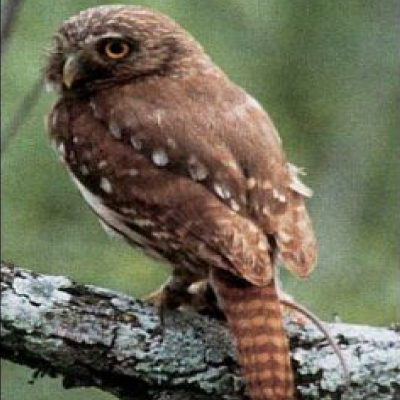
 The Cactus Ferruginous Pygmy Owl (Glaucidium brasilianum cactorum) is an alleged subspecies of the Ferruginous Pygmy Owl (Glaucidium brasilianum). Usually when I write of birds, I seek information at the Cornell Lab of Ornithology. But in this case, search for “Cactus Ferruginous Pygmy Owl” or “Ferruginous Pygmy Owl” or “ferruginous owl” yielded no results. When I searched for “pygmy owl” I get an article on the “Northern Saw-whet Owl.” The Sibley Guide to Birds does have a brief article on the “Ferruginous Pygmy Owl” but nothing on the “cactus” variety. In a sense, the Cactus Ferruginous Pygmy Owl is not a species distinct from the Ferruginous Pygmy owl. The same situation holds true for the alleged “southwestern” or “southwest” Willow Flycatcher.
The Cactus Ferruginous Pygmy Owl (Glaucidium brasilianum cactorum) is an alleged subspecies of the Ferruginous Pygmy Owl (Glaucidium brasilianum). Usually when I write of birds, I seek information at the Cornell Lab of Ornithology. But in this case, search for “Cactus Ferruginous Pygmy Owl” or “Ferruginous Pygmy Owl” or “ferruginous owl” yielded no results. When I searched for “pygmy owl” I get an article on the “Northern Saw-whet Owl.” The Sibley Guide to Birds does have a brief article on the “Ferruginous Pygmy Owl” but nothing on the “cactus” variety. In a sense, the Cactus Ferruginous Pygmy Owl is not a species distinct from the Ferruginous Pygmy owl. The same situation holds true for the alleged “southwestern” or “southwest” Willow Flycatcher.
The U.S. Forest Service published a long article entitled “Ecology and Conservation
of the Cactus Ferruginous Pygmy-Owl in Arizona.” (Link to report)
They described the owl: “The cactus ferruginous pygmy-owl is a small gray-brown or rufous-brown owl, approximately 16.5 to 18 cm [about 7 inches] long. Wingspan is about 12 inches. In comparison with G. b. brasilianum and G. b. ridgwayi, this subspecies exhibits shorter wings, a longer tail, and generally lighter coloration.” Female typically weigh 75g while males average 64g.
“The vocal repertoire of the cactus ferruginous pygmy-owl comprises several calls, some of which appear to be specific to age or sex of owl. The advertising call of the adult male is heard primarily at dawn and dusk but also during daylight and even moon rise, especially during the courtship period. It is ventriloquial and consists of a prolonged and monotonous series of clear, mellow, whistling notes… During the breeding season, females utter a rapid chitter, possibly a contact call with the male and juveniles and also for food begging.”
Habitat for the ferruginous pygmy owl is variable. ” Partly because of this species’ plasticity
and partly due to the lack of detailed habitat studies, the habitat requirements of cactorum remain poorly understood.”
“In the eastern part of the range, plant communities supporting the cactus ferruginous pygmy-owl are coastal-plain oak associations, mesquite bosques, and Tamaulipan thornscrub in south Texas …, lowland thickets, thornscrub associations, riparian woodlands and second-growth forests in northeastern Mexico.”
“In western Mexico, the owl may occur in Sonoran desertscrub, Sinaloan thornscrub, Sinaloan deciduous forest, riverbottom woodlands, cactus forests, and thornforests…. In Arizona, the owl is historically associated with cottonwood (Populus fremontii) and mesquite (Prosopis velutina) riparian woodlands …and Sonoran desertscrub.”
Pygmy owls are fierce hunters and frequently attack birds larger than themselves including mourning doves and chickens. They also hunt spiny lizards and rats.
The cactus ferruginous pygmy-owl was first described in the Tucson area in 1872 and naturalists described ” the subspecies as common or fairly common along some streams and rivers of central and southern Arizona.” Apparently there was a sharp decline sometime before 1950, cause unknown, but it is speculated that the decline was due to changes in riparian areas. Some naturalists, however, noted expansion along irrigation canals.
For more details and description of the owl, read the report linked above.
The range maps below put some perspective on the significance of the Arizona population relative to the population as a whole. However, environmentalists are still trying to get the Arizona population of pygmy owls listed as an endangered species.
See also:
Pygmy owls and property rights
Whatever happened to Pima County’s Sonoran Desert Conservation Plan?

